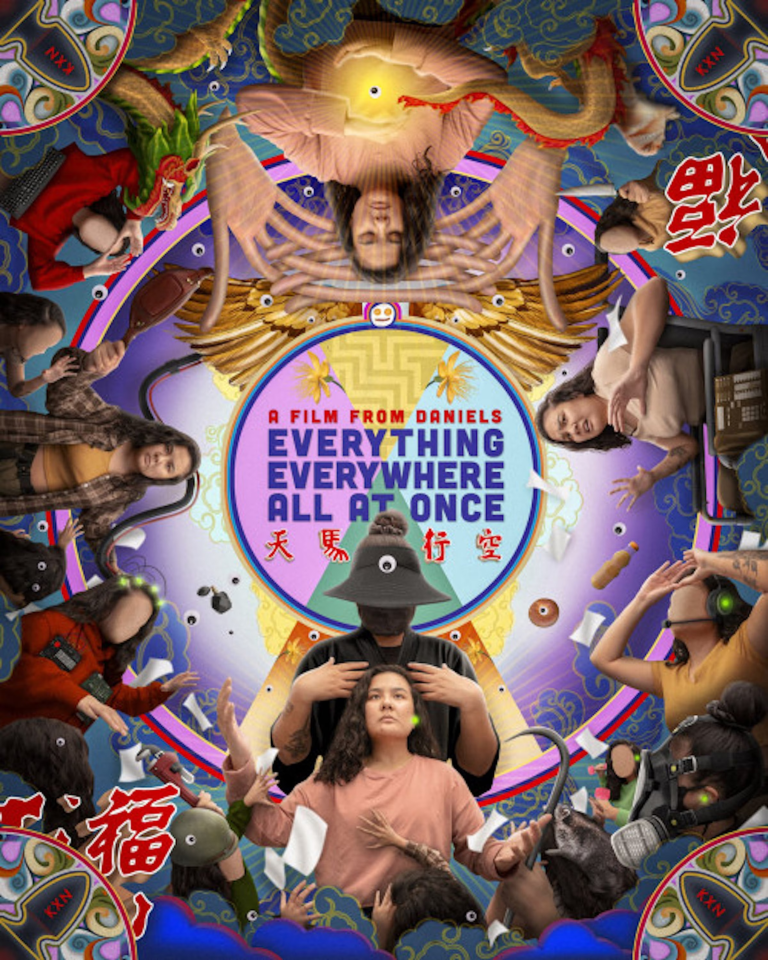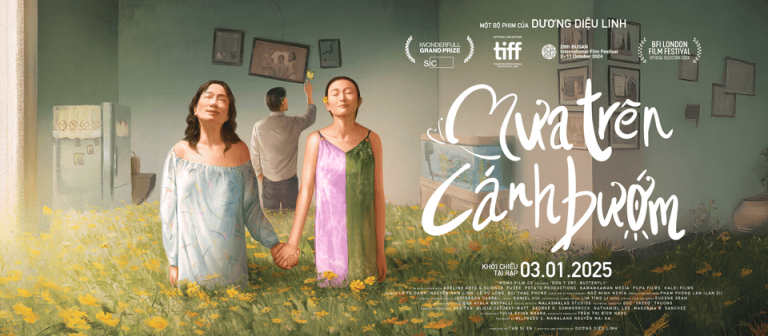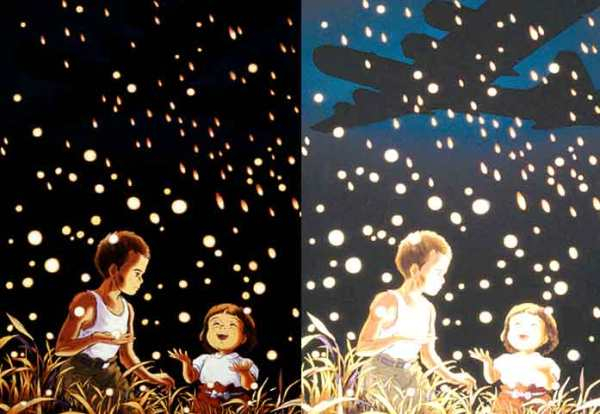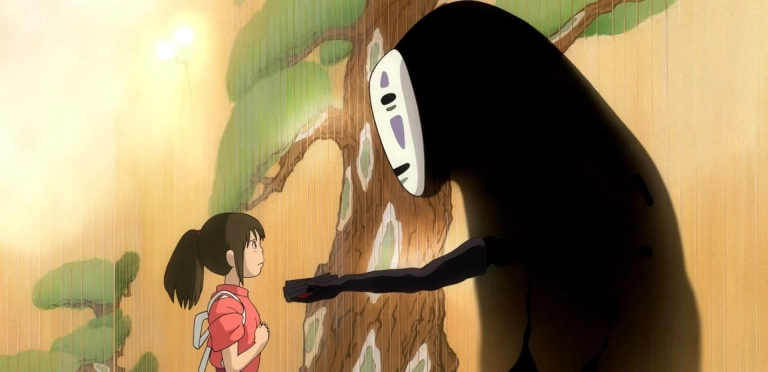Recently, Everything Everywhere All at Once won 7 Oscars, including the most prestigious award: Best Motion Picture of the Year. I actually watched EEAAO (as I’ll refer to it from here on) earlier this year, before it gained much attention from Vietnamese audiences. Even back then, I rated it highly—and to this day, it remains my second favorite film, just behind Triangle of Sadness.
So what makes this seemingly chaotic East-meets-West film such an extraordinary success? How did EEAAO manage to outshine works from some of Hollywood’s most seasoned directors to win the top Oscar? Here’s my personal analysis and thoughts.
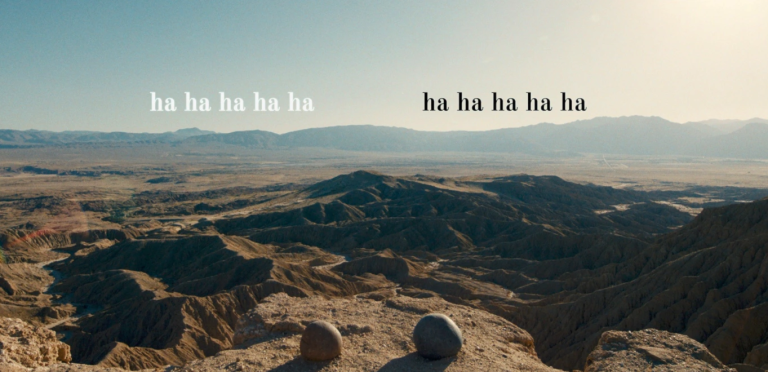
Note: Spoilers ahead.
Before watching EEAAO, I was both excited and skeptical. At that time, the multiverse concept was being heavily explored by Marvel. As a DC fan, I first encountered the multiverse through the Flashpoint comics. But while DC was lagging behind, Marvel brought this fascinating concept to the big screen first. So it came as a surprise that this breakout multiverse film wasn’t from DC or Marvel, but from an unknown indie project. When I saw the poster and trailer, it seemed chaotic and unrefined—an Asian cast set in an American context, speaking English, yet featuring Chinese-style costumes and settings. The visual effects looked almost “cheap,” reminiscent of B-grade Hollywood action flicks.
But as I watched, I was taken on a journey of constant surprises.
The Multiverse Meets a Chinese-American Laundry Owner
The story centers on Evelyn Wang (played by Michelle Yeoh), a Chinese-American woman who owns a struggling laundromat. She has a timid husband, a traditionalist father, and a rebellious lesbian daughter. Evelyn’s life feels like a chaotic mess—her family is falling apart, and her business is being audited by the IRS. Suddenly, she’s pulled into a multiverse war against a mysterious villain named Jobu Tupaki—who turns out to be a version of her own daughter from another universe. This Jobu Tupaki was created through Evelyn’s failed experiments in a different universe, gaining the power of all her multiversal selves and intending to destroy everything.
The first third of the movie sets the scene, introduces the characters, and establishes Evelyn’s current struggles. It also brings in the bizarre events initiated by an alternate version of her husband, Waymond. At first, it’s confusing—why is Evelyn meeting a different Waymond? Why is she “jumping” across universes? What’s with Waymond’s strange behavior?
But viewers should not feel discouraged. The film gradually explains everything. While the multiverse concept may seem overwhelming at first, it becomes increasingly engaging and even fun. Evelyn has to jump into alternate versions of herself to acquire skills to fight Jobu Tupaki. In doing so, she experiences countless possible lives—each one the result of a different choice she might have made.
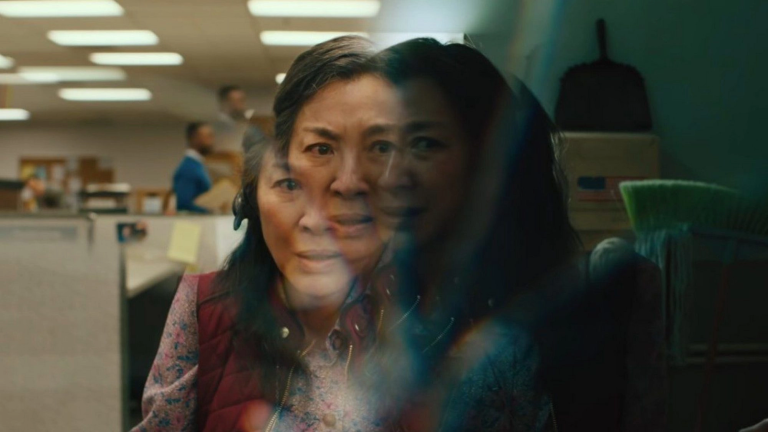
Philosophy and Family at the Heart of Chaos
The multiverse in EEAAO branches from every choice we make. In some universes, Evelyn never marries Waymond and lives an entirely different life. But across all these experiences, she finds two constants:
- She always clashes with her daughter, Joy (Jobu Tupaki).
- She realizes that a life with her kind-hearted husband Waymond might not be glamorous—but it is full of genuine happiness.
The first core message of EEAAO, to me, is the value of family. Beneath its action-packed, superhero, multiverse shell, this is an Asian family drama exploring generational conflicts in a modern society. It’s a three-generation household with a rebellious, lonely daughter struggling with her identity as a lesbian, unable to express herself freely in a conservative Eastern family. Only through the multiverse journey—meeting different versions of her husband, her father, and herself, and repeatedly failing to defeat Jobu Tupaki—does Evelyn realize that fighting only drives her daughter further away. The only path to saving the multiverse is understanding and love.
This idea reflects a foundational concept in Eastern philosophy: family is the root of society. In the past, Eastern philosophy often emphasized rigid hierarchy, male dominance, and absolute obedience. EEAAO maintains the importance of family but introduces a progressive twist—emphasizing empathy, openness, and mutual respect over blind authority.
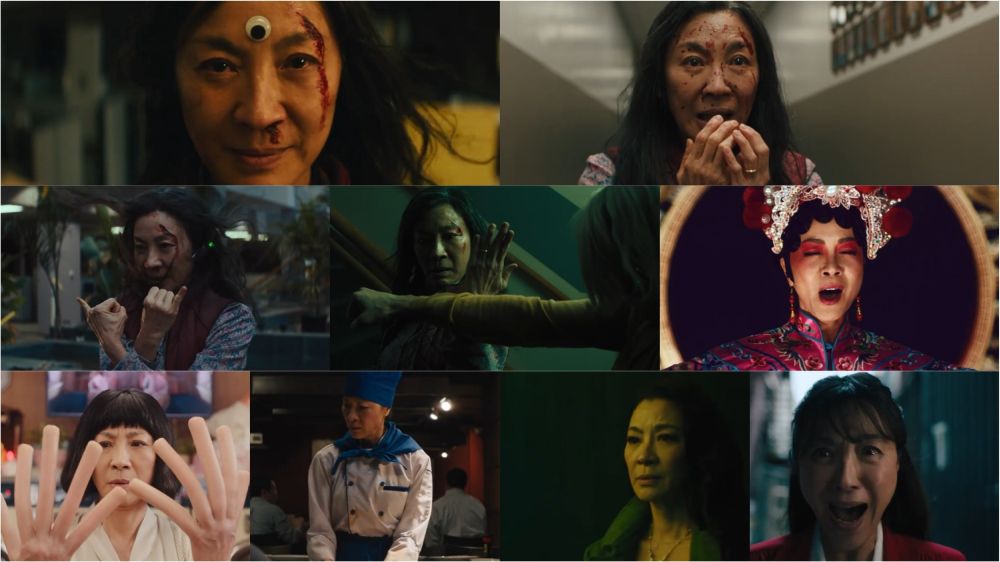
The Yin-Yang Balance and the Illusion of Control
The film heavily incorporates the yin-yang philosophy: it begins in artificial peace that hides chaos (extreme order leads to disorder), and ends in what seems like a broken family—but one that finds reconciliation (extreme despair leads to hope). Evelyn realizes that trying to fight everything leads to ruin, and only by softening, understanding, and embracing her daughter can she begin to heal. That’s the philosophy of balance, or as we say: “softness overcomes hardness.”
This duality appears throughout the film, from the poster to subtle design elements:
- In the bagel universe, the bagel is black and everything around it is white. Jobu Tupaki wears white while Evelyn wears black.
- The third eye on Evelyn’s forehead has the black-white yin-yang shape.
- Circles appear repeatedly: the washing machine drum, the bagel, a mirror, and the tax office’s audit circle.
Western Nihilism and the Depression Within
While steeped in Eastern philosophy, EEAAO also taps into Western existentialism—specifically nihilism. Jobu Tupaki is deeply affected by nihilistic despair. She believes the universe is meaningless, filled with pain and suffering. Her goal is to collapse everything into the black hole of the bagel—a symbol of void and destruction. According to the directors, the bagel represents nihilism. But I also see it as a metaphor for suicide.
Jobu Tupaki shows signs of depression—she’s hurting, chaotic, emotionally detached. In the rock universe, she confesses she’s stuck and sees no path forward. This is a powerful message: unresolved family trauma can lead to depression, and those who suffer may want to destroy everything—including themselves and those they love. Evelyn is drawn to the bagel by Jobu Tupaki, echoing how depressed individuals can drag loved ones toward their own emotional collapse.
The ever-spinning washing machines surrounding Evelyn’s life resemble black holes—constant, silent threats of emotional implosion.
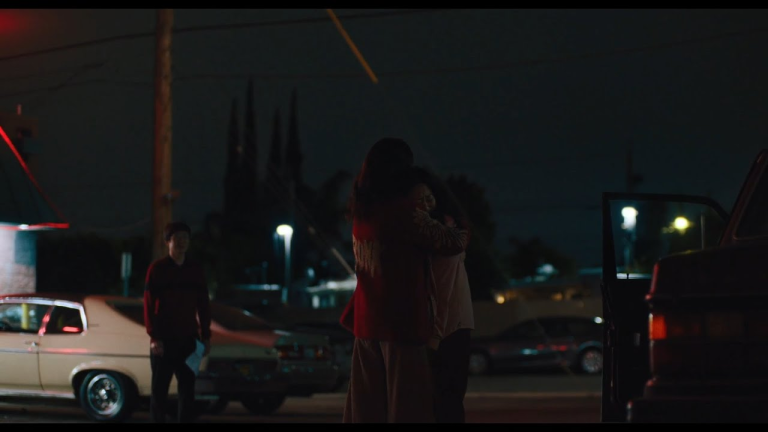
When Love Is the Only Way Out
We often underestimate the impact of family relationships. In many Asian households, we prioritize grades, success, and financial survival—just like how Evelyn fixates on her laundromat at the beginning. But we forget that emotional neglect can lead to psychological crises with irreversible consequences. EEAAO wraps this tough truth in surreal action and humor, allowing its message to land gently but effectively.
The solution the film proposes—genuine love—is not revolutionary. But its delivery is remarkable. Each universe brings a new perspective, and even the strangest ones (like the hotdog-hand universe, where Evelyn and the tax officer are lovers) speak to acceptance beyond differences. There’s a universe where Evelyn becomes a glamorous movie star, never having married Waymond. Yet both she and Waymond, successful in their own ways, feel incomplete. In a deeply touching moment, Waymond says:
“In another life, I would have really liked just doing laundry and taxes with you.”
The Universe Where Even Rocks Can Love
My favorite universe is the one with two sentient rocks. Here, Evelyn and Joy are silent stones in a barren world with no life. They can’t speak, but they can communicate through thought. Initially motionless, they represent a pause from the chaos—a quiet, contemplative space for mother and daughter to reflect. Joy admits she feels stuck, and Evelyn realizes they are, in a way, the same.
When Evelyn chooses love and changes her approach, something magical happens: the rocks begin to move. In a universe without rules, love breaks all boundaries—even physics.
More Layers Beneath the Bagel
EEAAO carries other messages as well:
- A critique of rigid Eastern cultural norms—especially within Chinese society.
- A satire of the American Dream—highlighting how dreams are also taxed, literally and figuratively.
- Numerous tributes and cinematic references, from 2001: A Space Odyssey and Ratatouille, to In the Mood for Love and Jackie Chan films.
On a technical level, what seemed “cheap” in the trailer feels intentional and effective in the actual film. While not as polished as major Hollywood productions, its raw, almost amateurish charm brings an energy that’s both fresh and authentic.
Conclusion
EEAAO may wear the costume of a multiverse, superhero action movie, but it’s really about real-life heroes—people trying to save their families. Like a stuffed bun, its outer layer is fun and chaotic, but the filling is rich with meaning. At its core, the film is about reconciliation, particularly in families on the verge of falling apart. What I love most is its unique storytelling and the delicate way it weaves deep messages into a surreal tapestry. No wonder it rightfully won Best Original Screenplay at this year’s Oscars.

